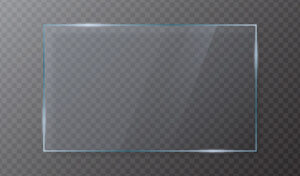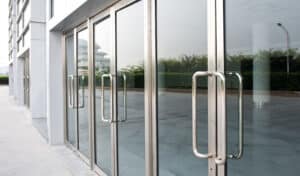You probably have a few mirrors in your home, but do you know how they work? Today, we’re taking a deep-dive into the science about how mirrors work.
Mirrors are an everyday part of life that are often taken for granted. It’s easy to overlook the physics of mirrors and how exactly they function.
Continue reading to learn more.
The Law of Reflection
Before we can fully understand mirrors, we need first to take a look at light. The law of reflection says that light behaves in a very predictable way. When light rays hit surfaces, they bounce in a certain manner, similarly to a ball bouncing off the ground. The angle of incidence is the incoming angle and is always equal to the angle of the ray that leaves the surface, also known as the angle of reflection.
For example, in the evening, when the sun’s rays hit a lake at a low angle, they bounce off at the exact same low angle and just about blind you. Okay, we’re being dramatic, but you know exactly what we mean. Compare these reflections to midday, when the sun is overhead — it’s quite a difference! These low angles explain why the glare of the sun is most intense during the evening and morning hours.
Diffuse Reflection vs. Specular Reflection
Light is invisible until it can bounce off something. For example, when a light beam travels through outer space, it is only seen when it runs into something that makes it scatter, like a satellite or a hydrogen cloud. This is called diffuse reflection and is how we interpret light hitting uneven surfaces. The law of reflection we spoke of earlier still applies, but instead of one surface, the light is hitting countless surfaces that are microscopic. Mirrors, on the other hand, do not give a diffused reflection. Rather, they offer a specular reflection that allows light to reflect without disturbing an incoming image on its smooth surface.
This complex concept brings up an interesting question: Why do mirrors turn right into left and left into right? Why are up and down not reversed? When you get down to it, mirrors do not actually reverse anything! Mirrors are simply switching front and back, just like a stamp or a printing press would. Try writing your name on a piece of paper with a black marker and hold it up to a mirror; it’s backward. Just as if you were to hold it up to a light and look at it from behind. Your mirror image is essentially a light-print of you!
Contact Murray Glass
Next time you look in a mirror, you’ll know precisely how mirrors work.
For all of your glass and mirror needs, installation or repairs, commercial or residential, the experts at Murray Glass can help. Our number one priority is to ensure you are 100% satisfied. We proudly hold ourselves to the highest standards and offer only the highest-quality glass and mirrors. See why countless homes and businesses across the Wasatch Front in Utah trust Murray Glass for all of their glass and mirror needs. Contact us today for your free estimate.





